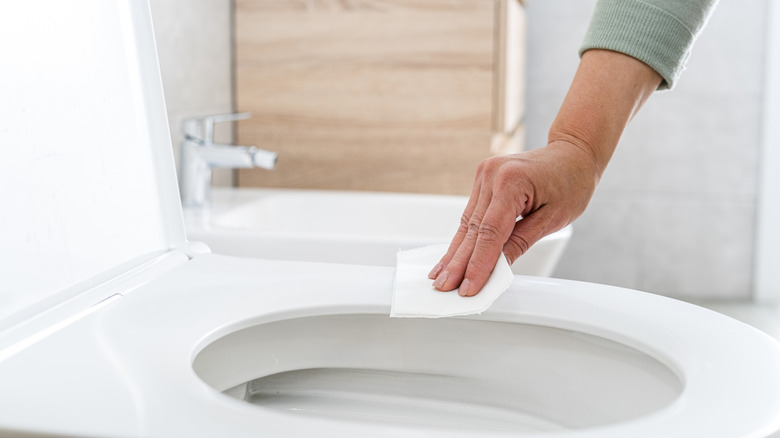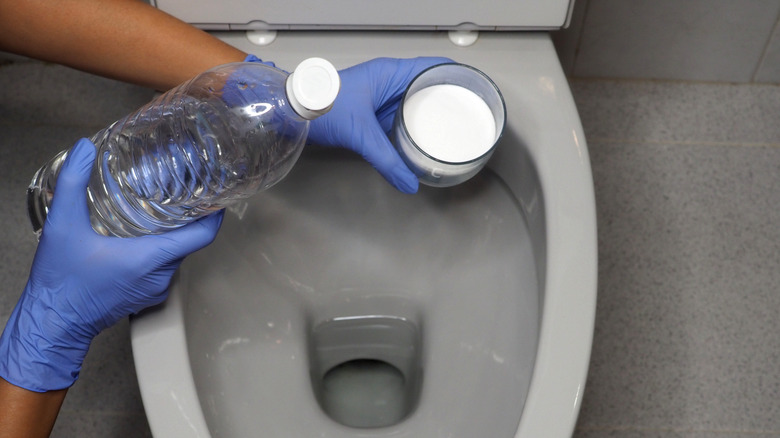Blast Stubborn Stains Off Your Toilet Seat Using A Kitchen Staple You Already Own
A yellow, stained toilet seat can stand out like an eyesore in an otherwise clean-looking bathroom, but there is a way to make that seat look brand new again with nothing more than a common ingredient from your kitchen. Baking soda, when combined with white vinegar, creates a strong cleaning reaction that can dissolve stubborn buildup and rust stains without damaging your plastic, enamel, or wooden toilet seat. Baking soda cleaning hacks are nothing new, and the chemical reaction between it and vinegar produces carbon dioxide bubbles that help get stains out of porous surfaces. Unlike harsh chemical cleaners that can slowly eat away at plastics over time, this natural solution helps remove discoloration while being safe for regular use.
The baking soda acts as a mild abrasive that scrubs away at stains without scratching the surfaces, while vinegar works as a natural disinfectant, killing bacteria and breaking down mineral deposits. Together, they can tackle all types of toilet seat stains, from hard water rings to urine scale to those mysterious splashes that are permanently etched into the surface. This method also works well on those frustrating stains along the hinges and underside of the seat that standard cleaners can often miss. Stubborn stains could be the reason why your toilet constantly smells bad, and this mixture helps eliminate odors instead of just masking them with artificial scents, leaving your bathroom genuinely fresh.
Cleaning techniques using baking soda and vinegar
The best way to start the cleaning process is to remove your toilet seat, if possible. This allows you to access all the areas of the seat, including any hidden stains in crevices and hinge areas. Create a thick paste with your ingredients, mixing 3 parts baking soda with 1 part water, and apply generously to all the stained areas with an old toothbrush or soft sponge. Let this mixture sit for a bit to allow it to penetrate the stains before spraying on the white vinegar. This is where you will see the bubbling action take place, helping lift stains to the surface. Give the whole thing another scrub and then rinse. You should notice the difference immediately, but if you still see stubborn stains, run through the process once more.
After you have finished, let your seat dry completely before reattaching. In between these deep cleans, maintenance is important. Keep a small jar of baking soda near the toilet with a dedicated cleaning brush. A quick sprinkle followed by a spray of vinegar makes quick work of any daily splashes and helps prevent new stains from setting in. Plastic seats will benefit from the occasional polishing with a microfiber cloth after cleaning to restore their shine. Wooden seats can use attention as well, but if you're out of wood polisher, there are some alternatives using common household items. With this method, even old stains can be dramatically improved if not removed completely.

